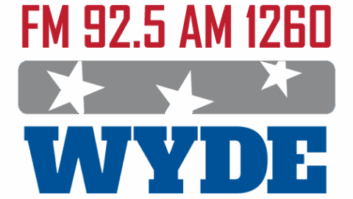Recently we discussed Joan Warner�s responses to a recent article by John Patkin (which you can readhere)about the supposed impending doom of over-the-air radio. Now,James Cridland, the “radio futurologist,” and the Australian Broadcasting Company�s Director of Radio Michael Mason have responded as well, in asiaradiotoday.com(Cridland�here, Mason�here).
Both Cridland and Michael are in Mason; but their comments about radio are germane to North America and Europe as well.�
“AM/FM/DAB+ an endangered species?” Surely not! said James. �John’s piece appears to have three thoughts:�
- Apple are apparently phasing out the 3.5mm headphone plug, so AM/FM/DAB+ is doomed.
Currently, there is zero listening to AM/FM/DAB+ on Apple devices. The existence, or not, of the 3.5mm headphone plug won’t therefore make any difference to broadcast radio listening on iOS devices, since it’s already at zero.
�The argument is that this makes it harder to enable a broadcast chip inside the phone. However, even if Apple was considering that, its proprietary connector still has a grounding shield which would be of use for an antenna. Bluetooth headsets are still very much in the minority.�
�The multiplatform market of the UK has around 7% of all radio listening happening via online in total, with AM/FM/DAB accounting for the rest. While this online figure isn’t published in Australia, I gather it’s around 10% and DAB+, alone, is delivering around twice that share of listening. Mobile is a significant minority, still, of all radio streaming. It’s an important platform, but let’s put it in perspective.�
- DAB+ failed in Hong Kong and Singapore so AM/FM/DAB+ is doomed.
�It’s disappointing that DAB+ is seen to have failed in Singapore and Hong Kong, I’d agree: but quite a leap to point to all broadcast radio being doomed.
�There are a number of factors to point to Singapore and Hong Kong�s decisions: not least an industry that didn’t work together to promote DAB+ and a lack of additional stations that gave real consumer appeal. DAB+ is growing fast in Australia, the UK, Norway and other countries at the moment. In the UK, DAB is growing faster than the internet as a way of listening to the radio. (It probably is here in Australia, too, but the figures aren’t public).
�None of this is particularly relevant to AM of FM. I’d agree that AM�s days are eventually numbered; but I don’t see any reason why FM is endangered. Advertisers seem to agree, with the latest CRA figures showing a 9% increase in revenue. And audiences are still listening, too.
- Broadcast radio lacks sharing, real� time data and interactivity so AM/FM/DAB+ is doomed.
�Broadcast radio�s doing pretty well at sharing. When I researched the iTunes chart a few weeks ago for a client I discovered that over 35% of the top 100 podcasts were from radio companies. Services like rewindradio.com, audioboom.fm and Omny help stations share their audio with others. Testing on Nova in Brisbane is AirShr, a smart tool that captures and shares anything you’re interested in.
�Real� time data?That exists, too; the thousands who are listening online give a good proxy for true listener behavior, and electronic measurement has its issues but gives overnight figures in most parts of Scandinavia, for example, along with the US and other countries.�
�And as for interactivity the first radio request phone-�in was in the 1940s, and even a cursory listen to 2GB or any ABC Local Radio morning show will show how interactive the medium still is. The great news here is that we can listen on AM/FM/DAB+ while we interact on the phone!
So, is AM/FM/DAB+ an endangered species?
�…an �endangered species�? 93% of people in Brisbane listen to AM/FM/DAB+ every week. If that’s an industry imminently about to be made extinct, I’m a Tasmanian tiger.��
Figures in the United States are roughly the same as Australia. A Morgan Stanley survey of 2,016 Americans, from November 2014, found that 86% use AM/FM radio; and, according to Nielsen, over 240 million people in the U.S., or about 92% of the population over 12, listen to AM/FM radioat least once per week.
Let�s hear from Michael Mason now.
�I�ve seen the responses from James Cridland and from Joan. They were very sound and made a lot of the points that I would hope to see in a robust defense of the medium.
�From an ABC perspective, I think it�s becoming apparent that Radio doesn�t have a content challenge as much as it has a distribution challenge.
�DAB+ is an important spoke in our distribution wheel. We are totally committed to DAB+ and our own data shows very encouraging uptake in markets where it�s available. Clearly we�re keen to see a wider rollout, and a real priority for us is getting high-power, permanent DAB+ in all Australian capital cities by in the next few years.�
�Audio streamed to smartphones is something we�re incredibly excited about, but we see it as complementary, rather than as a substitute. If free-to-air radio migrated to IP only and today�s audiences shifted en-masse, the telcos would fall over as the required one-to-one connections would overwhelm the networks. Radio�s one-to-many model is astonishingly efficient by comparison.
�Some have argued these problems will go away, as bandwidth continues to grow. However, history shows each leap in available bandwidth is quickly followed by a leap in consumption of bigger files � so usage is travelling upwards roughly as fast as availability.
�Overall though, and most importantly we are still all about meeting our audiences wherever they want to find us – on AM / FM / DAB+, on their phones, tablets or PCs, in their cars, on the ABC Radio app or on 3rd party platforms such as the iheart radio deal we announced today with ARN.�
Colleagues, let�s put away the razor blades and forge ahead. The only people predicting the death of our medium are the ones that want to see it dead. They don�t let facts stand in their way and figure if they repeat their assertions enough times, people will start to believe it. Don�t do it. As a medium, radio still has a lot to offer andisn�t going away any time soon.�







